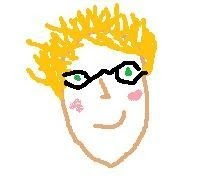
Film poster courtesy of Wikipedia and IMPAwards.com
********************************************************
As someone who spent a LONG time working in the book industry, I know well the perils of enjoying a book just to find the film a mish-mash of a few vague concepts explored in depth in the book. (Several years ago, as a matter of fact, my favorite book was made into a film. Haven't seen it and won't. It was in limited release, and while not "uniformly panned" by critics, it was, I think, not well understood. So I'm happy to continue to enjoy it as literature, and keep it in my mind and memory as is without relying on a screen adaptation.)
Happily, I am able to report, this is not the case with The Help. While a few minor details, the "toning down" a bit of one character's histrionics, and the inflating of another character's similar attribute, The Help is quite a faithful film, in terms of its reflection of the novel.
The casting and acting are so brilliant that you simply will not be able to visualize any other actresses undertaking these roles. I've always been a huge fan of Viola Davis' work, and in this role she not only doesn't disappoint, she simply carries the entire film. Emma Stone, as Skeeter, is indeed convincing. Bryce Dallas Howard, as Hilly, ALMOST goes "over-the-top" but barely and deftly manages not to, in a role that must have been difficult---I recently saw an interview with her in which she stated she could scarcely believe anyone could be so hateful as the character she portrayed. As "the moms", and despite the fact their roles are smaller (but certainly pivotal) both Allison Janney and Sissy Spacek were equally wonderful. I think Octavia Spencer enjoyed playing Minnie, and it shows in her work--if you see the film, look into her eyes when she is onscreen and you can actually see what I'm talking about. The "senior stateswoman" of the bunch, Cicely Tyson (remember "The Autobiography of Miss Jane Pittman"??) is onscreen all too briefly, but also fantastic during her brief turn as Constantine. Mary Steenburgen, as an NYC book editor, was a hard-nosed, reality-based, elegant reflection of the women who populated that industry and had successfully broken through the glass ceiling in the literary world in those days.
Despite the fact this film is thought of as "a chick flick" and was born of "chick lit", the film grapples with the civil rights cause and how life in the south was in the early 1960's. It takes on the issues of what it's like (whether upper class or poor) to be a woman, what it's like for the poor, and what it truly takes to change your circumstances (whether those circumstances involve being treated as an equal regardless of your skin color, or leaving an abusive husband, or having money, a nice home and a loving husband, but being ostracized as "white trash"), your life, and inevitably change the world at large.
Run, do not walk, to see this movie. Going with a gal-pal will make it twice as much fun. Bring a hankie, buy popcorn, and discuss afterwards. You won't be sorry!





.jpg)
